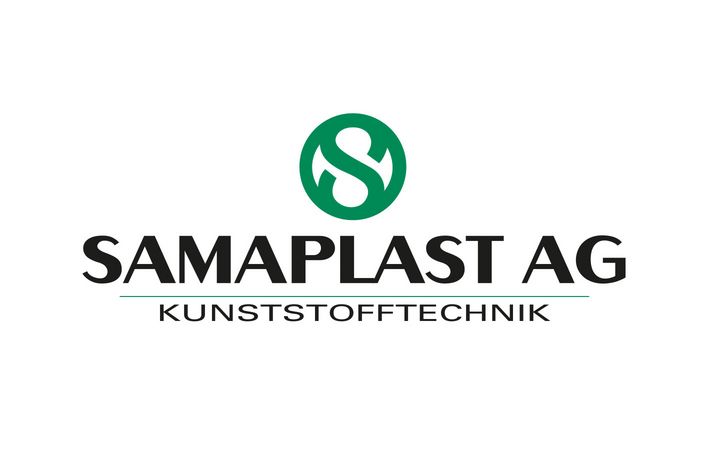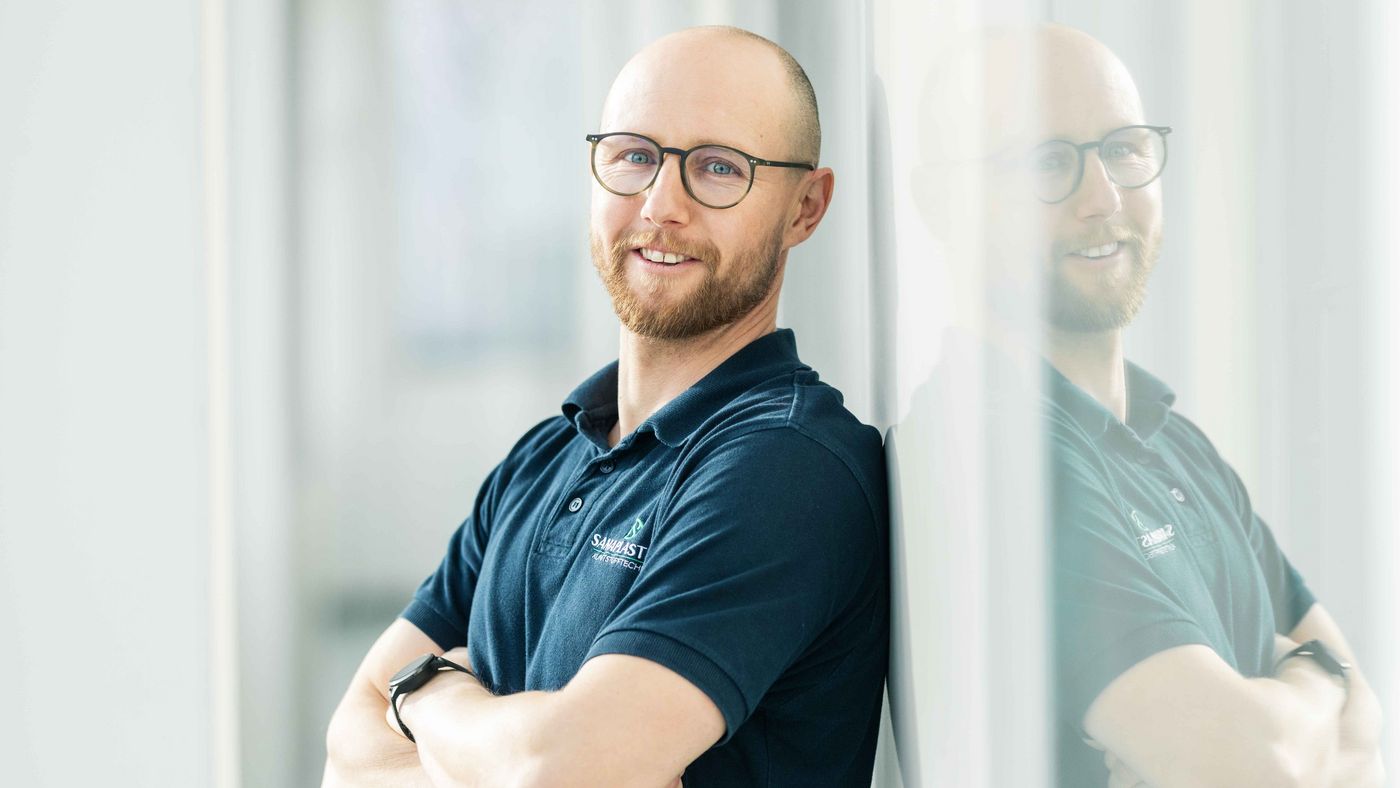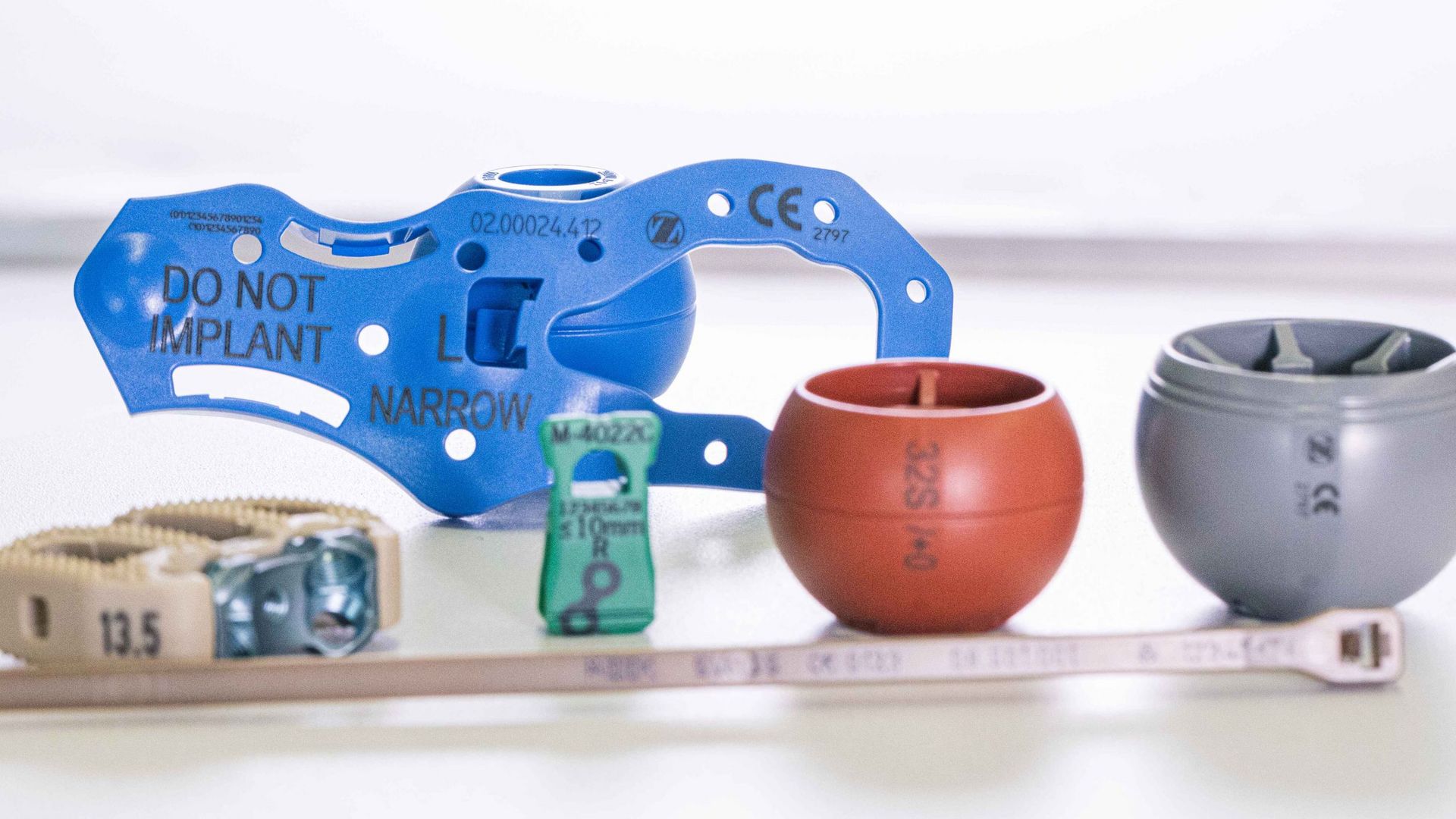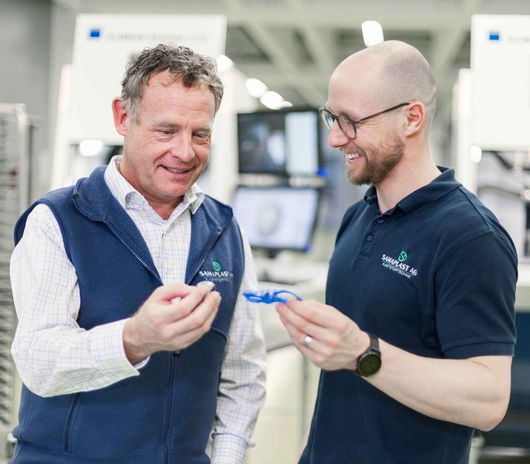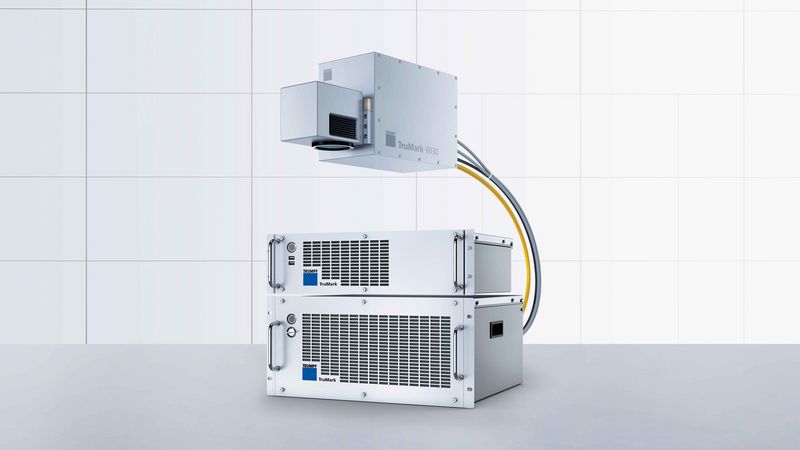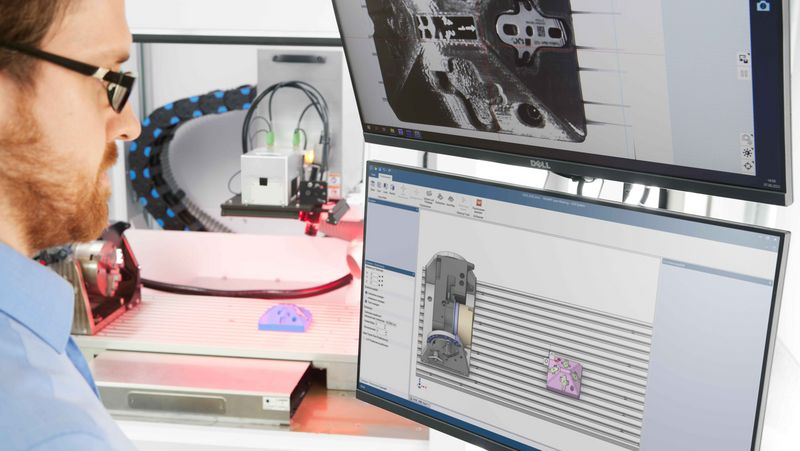Challenges
The high vertical range of manufacturing offers Samaplast AG a decisive competitive advantage. At the same time, this does mean that the Swiss-based company has to process an enormous range of plastics in different colors. This includes thermoplastics such as PEEK, PPSU, TPE, POM, and other absorbable materials. The range of parts is very versatile and includes flat through to complex 3D shapes. Hip ball joints made of PPSU, for example, that do not remain in the body but are used during the operation to test the final size of the implant.
Samaplast AG particularly manufacturers small batches. "Generally, this ranges from a single unit to several thousand," states Okle adding, "although we also produce large batches comprising millions of units." The majority of parts are produced in cleanroom conditions. The requirements of the medical technology sector are high. It is a challenging environment. "But it is exciting!" states Okle. Samaplast AG can rely on the combined expertise of its 95 employees. Stefan Schär is one of these employees. As the Head of Finishing and Logistics, he is responsible for the laser marking of medical products and implants amongst other things. In addition to serial numbers, Schär and his team add matrix and UDI codes. The company has been using the Vector mark laser from TRUMPF for this process for 20 years. The lasers work reliably, however products with round shapes cannot be marked with it without distorting the marking.
When Christoper Hoyle, the Software Product Manager at TRUMPF Switzerland, approached Okle and Schär in 2019 to ask if they would be interested in becoming development partners to test the TruMark 6030 with the TruTops Mark 3D software, they welcomed him with open arms. Together they are taking the plunge into 3D laser marking.

